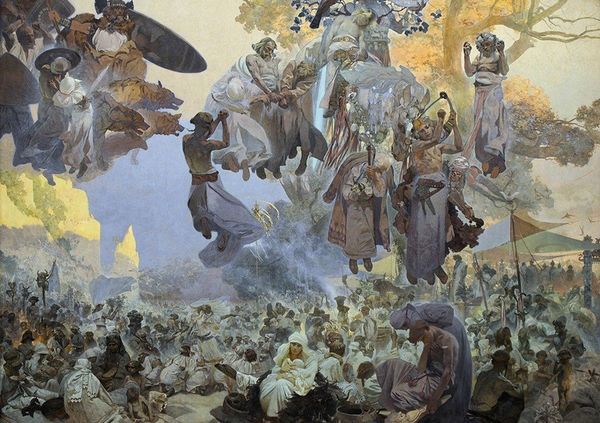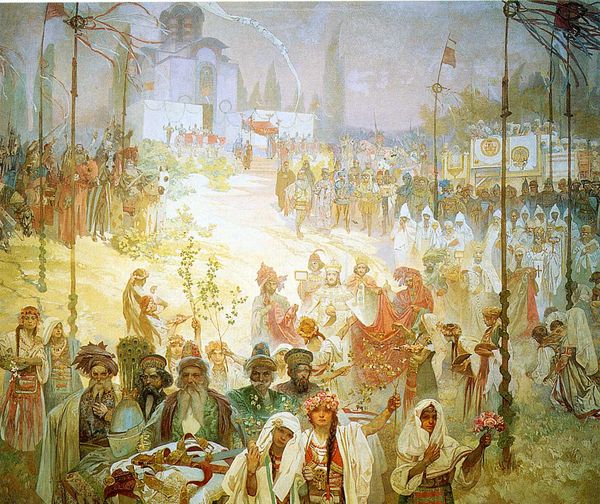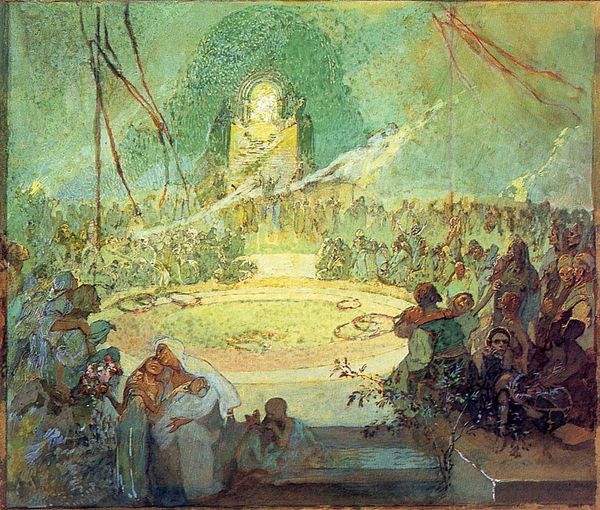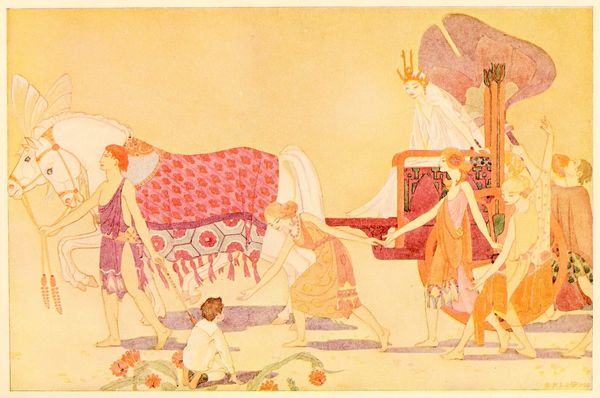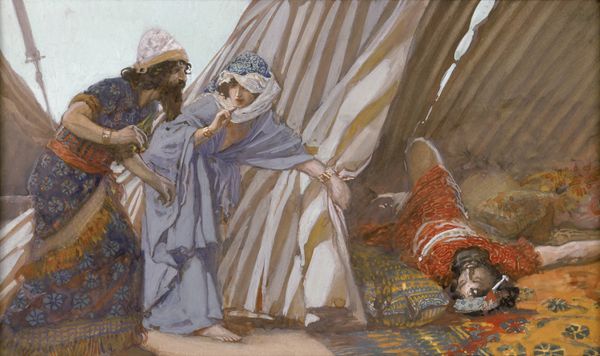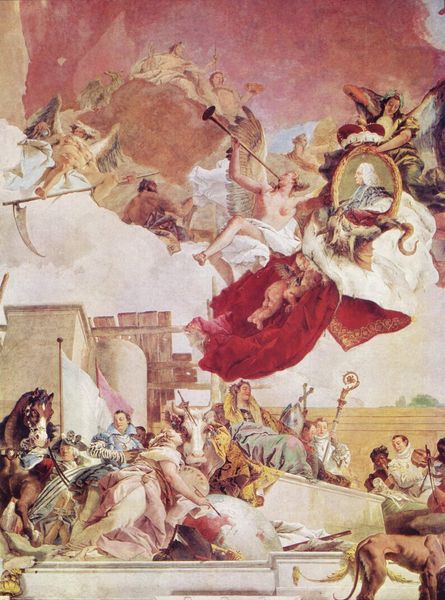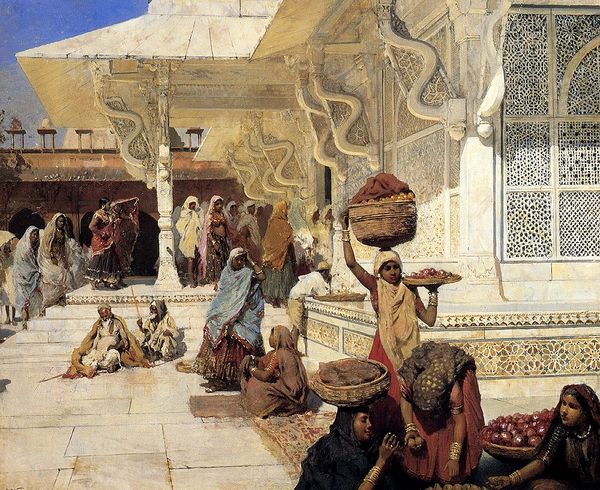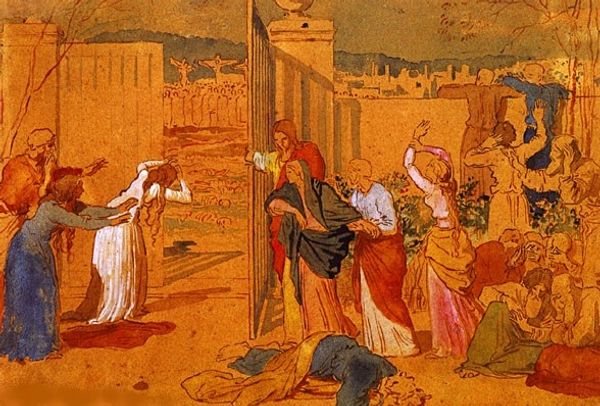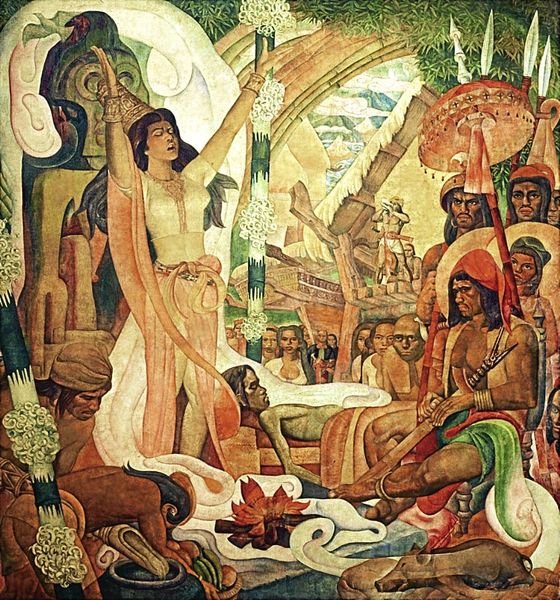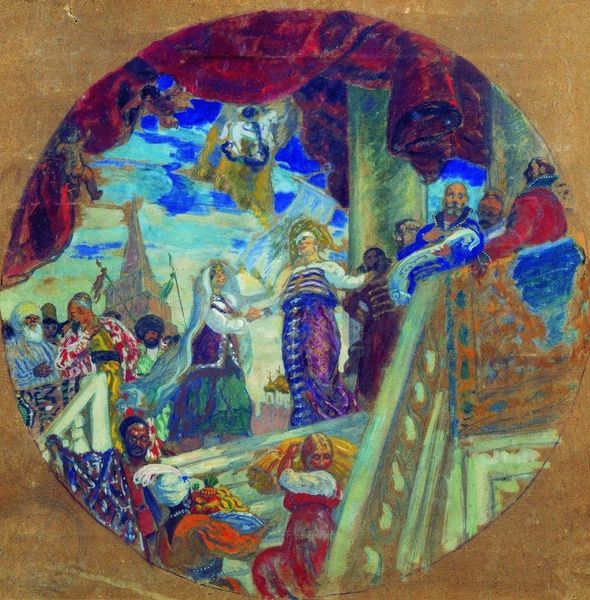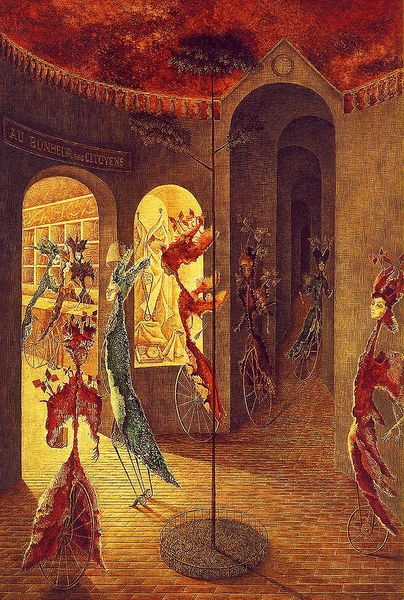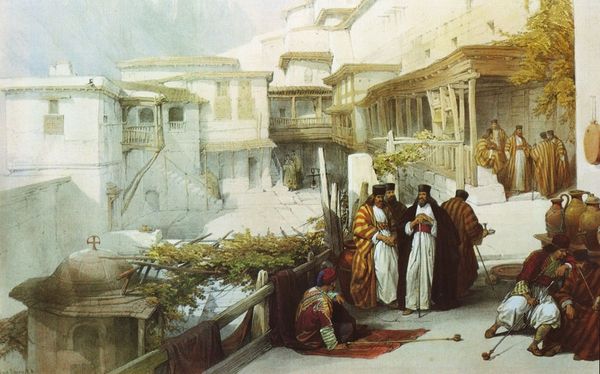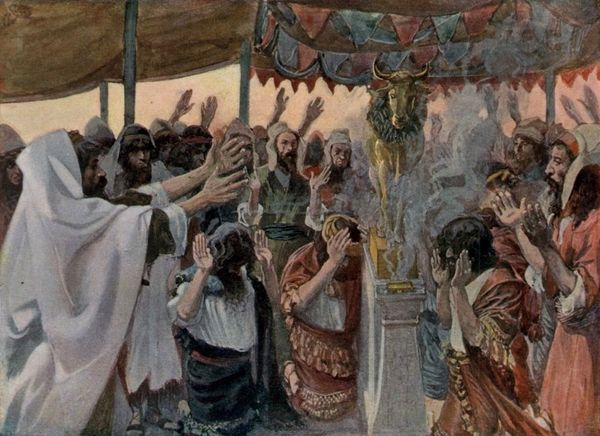
The Introduction of the Slavonic Liturgy 1912
0:00
0:00
alphonsemucha
Mucha Museum, Prague, Czech Republic
painting, watercolor
#
portrait
#
gouache
#
allegories
#
byzantine-art
#
allegory
#
symbol
#
painting
#
figuration
#
watercolor
#
symbolism
#
history-painting
#
watercolor
Dimensions: 610 x 810 cm
Copyright: Public domain
Curator: Here we have Alphonse Mucha’s, "The Introduction of the Slavonic Liturgy," completed in 1912, and held at the Mucha Museum in Prague. Mucha used watercolor and gouache in its creation. What strikes you first? Editor: Hmm. It feels like a hazy memory. The golden light bathing everything gives it this sort of… ethereal, dreamlike quality. Figures floating in the air. Almost like they are watching over the events unfolding below. Curator: Mucha's attention to materials really drives that feeling, right? Watercolor and gouache, often considered less prestigious than oils, offer this fluidity. But that belies the complex layering he employs, which creates depth and light—a tension between material humility and crafted grandeur. It’s very Art Nouveau in that respect, and fitting considering his poster work. Editor: Absolutely! And the use of those paler tones creates an incredible softness—though, thinking about it, those angelic figures are looking pretty Byzantine, icons suspended above a human drama. They seem almost trapped or supported within a light cloud...like floating on holy clouds. The scene below, though, has quite an intense focus...it's theatrical somehow. Curator: This "theatrical" air makes perfect sense when you consider Mucha's historical context and ambitions beyond Art Nouveau. Mucha invested considerable time and research into crafting these kinds of images depicting key historical events. The Slavonic liturgy was of huge political and cultural significance to Czech identity and pride at this time, of course, as was the making and widespread distribution of these sorts of artistic pieces. Editor: Right, it speaks of heritage. That’s so interesting, because the way he contrasts those "earthly" and "spiritual" elements—that interplay makes it a pretty moving reflection on faith. But is that fair to ask an object, or a person even, to bear so much cultural weight? That's a discussion in itself, I suppose. Curator: Well said. That complex weight might make one want to look more critically at how objects and the making of images operate within culture... Perhaps on a further visit. Editor: Absolutely. Makes you wonder what other stories the picture might like to whisper if we came back.
Comments
No comments
Be the first to comment and join the conversation on the ultimate creative platform.
